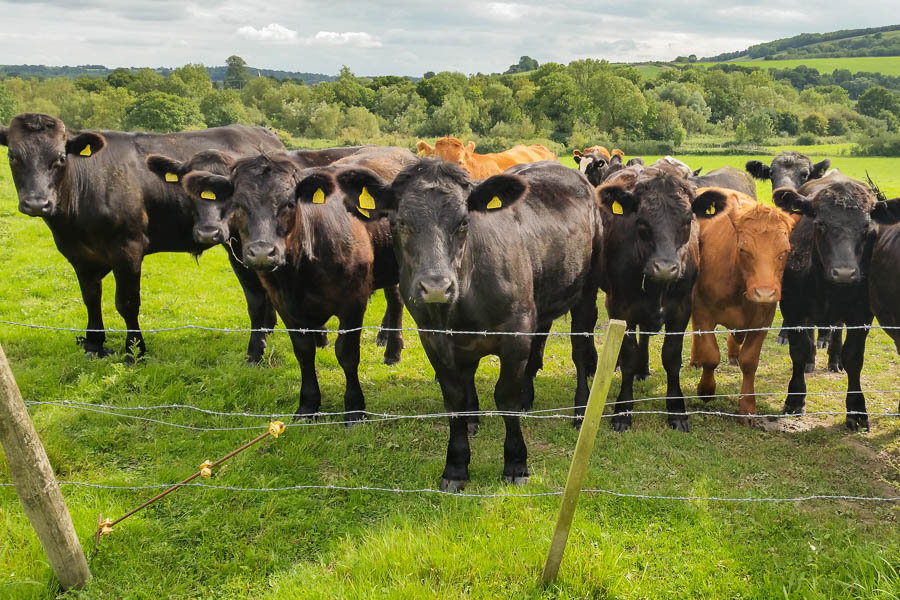Long-time readers may remember my shaky association with South Downs livestock, in particular the time I got run off a public footpath by several tons of angry beef. Yesterday, I put to test what my more agriculturally-minded friends have told me often: cows are easily intimidated.
Yesterday's walk through West Sussex included sections of public footpaths on which many enormous animals were grazing. In particular, one section of the walk went about 200 m straight across an open field with absolutely no barriers between me and these guys:

From the moment I entered the field, when the bulls were some distance away, they all noticed me and stared. Now, when predatory animals—dogs, for example—stare, you need to be somewhere else, unless you're armed. I was not armed, nor did I even have a big stick. But more to the point, cattle aren't predators.
It turns out that, under most circumstances, cattle are curious about but wary of humans. So as I'd been advised many times, when they inevitably started approaching me, I simply got loud and kept walking towards the other side. Shouting "Hey!" while pointing directly at them turned out to be a pretty good strategy; even better, for my mental health anyway, was how they got the hell out of my way if I stepped towards them aggressively. Then, once I was safely through the stile at the other end of the field, and my heart was no longer in my throat, I took the photo you see above and patted a few on their noses over the fence.
If you grew up in the country, this seems ridiculous. You know cows are dangerous the same way cars are: if you do something colossally stupid (like running away from them as I did in 1992), you could get seriously hurt. But if you remember that they're herbivores, bred for millennia to be docile, and completely dependent on humans for food, water, and protection from other predators (which they know on some level), cattle are generally harmless.
Plus, in 1992, I encountered young, aggressive bullocks—the one truly dangerous subset of cattle. These guys were steers, which are actually less dangerous than cows with calves.
Again, my rurally-raised friends have to find this hilarious. But I haven't done too many things lately that scared me as much as walking through that field yesterday. I really would have preferred sheep in the field to bulls, too. But at least now I think I'll be much less apprehensive about the next herd of cattle I stumble upon, whenever that happens.